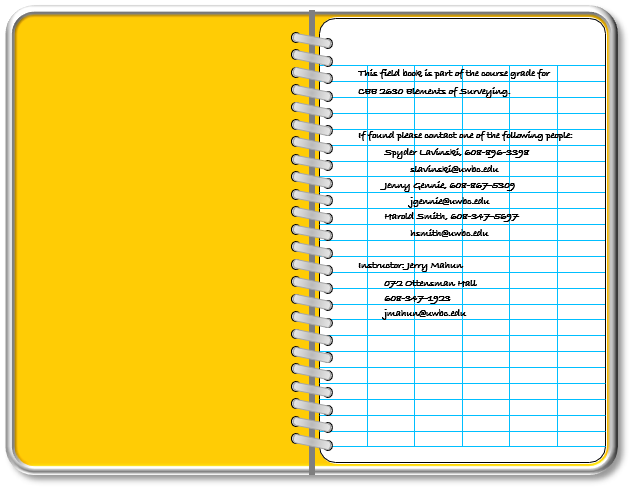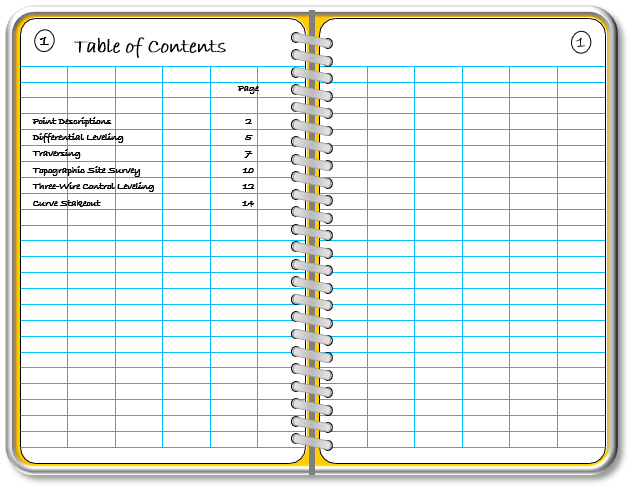D. Best Preactices
1. Field Book Setup
Just as individual field notes must be organized, so must the field book itself. Data in the book should be easy to find and contact information provided should questions come up.
a. Title page
Use the right plate inside the front cover for field book identification. A field book used in class should include course number, crew member names and contact information, similar to Figure D-1.
 |
| Figure D-1 Field Book Identification Plate |
A project-based field book should include project information (name, ID, etc), company, crew chief, and appropriate contact information.
b. Table of contents
A Table of Contents (ToC) is begun on the left plate of page 1, Figure D-2. Projects are identified by page title and are added to the ToC as they are completed.
 |
| Figure D-2 Table of Contents |
c. Use consistent page format
Surveying field operations are numerous and varied, consequently there are no specific rigid field note formats. Most Surveying textbooks show example note formats for different surveying processes which can be adopted or modified according to specific needs. Whatever format is used for a particular operation, it should allow for accurate data capture and be used consistently throughout the field book.
d. Do not remove pages or plates
Recording mistakes will happen and appropriate ways to deal with them are discussed in the next section. If an entire plate or page is riddled with errors, it is very tempting to remove it, especially when using a binder field book because page removal is easy. Pages are relatively easy to remove from a spiral bound field book also, while it is harder to do it cleanly with a sewn/glued book.
Sheets should not be removed because:
- Page removal is alteration of original data.
- The left plate is the back of the previous right plate and vice versa, Figure D-3. Removing a sheet can have unintended consequences.
 |
| Figure D-3 Page Removal Issue |